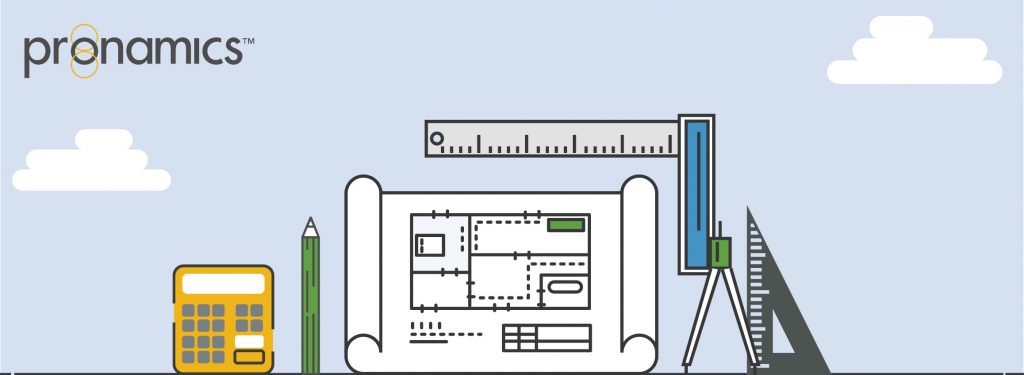WHAT DOES IT TAKE TO BE A GREAT ESTIMATOR
After 30 years of producing great estimating and project management software, Pronamics is well-positioned to know many experienced and successful estimators. This year, we are taking the opportunity to interview some of them, and get their thoughts and wisdom around this unique and challenging field.
Today’s featured estimator is Brett Browning.
BRETT BROWNING – Estimator extraordinaire
Brett Browning was tapped on the shoulder for an estimating role 25 years ago and he’s never looked back. A skilled and proficient site and project engineer at the time, Brett had consistently healthy monthly cost reports, demonstrating a very capable understanding of budgeting and forecasting, so the shift to estimator was one for which he was well prepared.
Here’s what he had to say about his time in the industry.
What got you into estimating?
I was a site and project engineer working in Brisbane but living in Melbourne. An estimating role came up and my boss suggested I’d be a good fit. My monthly reports were always pretty accurate, with the budgets assigned, the cost to date, the forecast to complete—so he could tell I had a good grasp of the costings. The estimating job was based in Melbourne and I had a two-year-old son, so I took it.
My son is now twenty-seven and a civil engineer—we talk shop every few days, it’s great.
One of the biggest estimating challenges in your career?
My first big tender at Macmahons was a road upgrade at the Telfer Mine in a remote part of WA, I left my timing a bit out for our final review and had to pull a couple of all-nighters before the final review which was on a Saturday morning… Luckily, the review went well and we won the job.
Is estimating a good job/career?
Absolutely. It has variety and you’re always learning. A project manager might be on the same job for a year or two; while in that time you’ll have done twelve different projects, each of which has their own diverse challenges.
Particularly because civil estimators use first principles (as opposed to builders who use more standard rates), you’ll find that no two jobs are the same.
What are the qualities of a good estimator?
Some maths, but not as much as you might think. You really need to be logical and methodical, and most importantly, stay calm under pressure. Deadlines loom, but you need to work steadily and have thick skin when dealing with people in the industry who have egos.
You also need to be confident in your pricing. When you are presenting the estimate to your managers, communicate clearly and expect pushback. If you are confident and have done your work, you can justify your figures without issue.
One of the biggest estimating challenges in your career?
It’s not a specific project, it’s actually the perception that people have, that estimators use a library of rates and pull prices from that. In civil estimating you need to:
- Develop the scope
- Know your construction methods (i.e. what is physically possible for different machines to do in the physical area)
- Work out your quantities
Before you can even start pricing, you need to build the project in your mind, starting from the bottom.
What is annoying?
When people don’t understand the breadth of experience that estimators have simply because they see so many more projects.
Also, sometimes it’s difficult to get accurate costs from previous projects—project managers might record falsework and scaffold under the same cost code so it isn’t always clear how much of each was used. That matters to an estimator because they cost differently, but project managers often have different priorities and spending ages recording specific details about supporting structures is not usually one of them.
What is one of the biggest estimating wins in your career?
The Port Augusta Bridge duplication in South Australia. This was an approximately $65 million job (direct costs only!) which involved extensive use of marine-based equipment including barges, tugboats, 280 tonne crawler cranes. This was for the new bridge (currently under construction) and upgrades to the existing bridge, including enhanced pedestrian and cyclist access and improved intersections on either side of the harbour.
This project will make a significant difference to east-west freight in Australia, and I’m very proud of the win.
Do you have any advice for younger estimators?
Start from the bottom up, build it up, think about everything that it relates to. Price the scope as you see, go in with an uncluttered mind rather than a pre-conception of what you think it should cost.
Be precise, be methodical, and when you’re under the pump for time, priortise the big money/value items, then the big quantities.
Remember, if the final price is $100, and margin is 10%, 10% of $100 is $10. If you’re 1% out, you’ve lost $1 of your take home. That might not seem like much, but when you’re dealing in the millions, it can be a huge difference.
Brett Browning runs Browning Estimating & Digital Engineering, and continues to work on some of Australia’s premiere infrastructure projects.
WHY PRONAMICS?
At Pronamics, we say what we mean, and we mean what we say. We value honesty and encourage all stakeholders to present their case in a friendly, professional manner.
We agree to work cooperatively to find the best possible solutions. We always remain open to dialogue and change.

